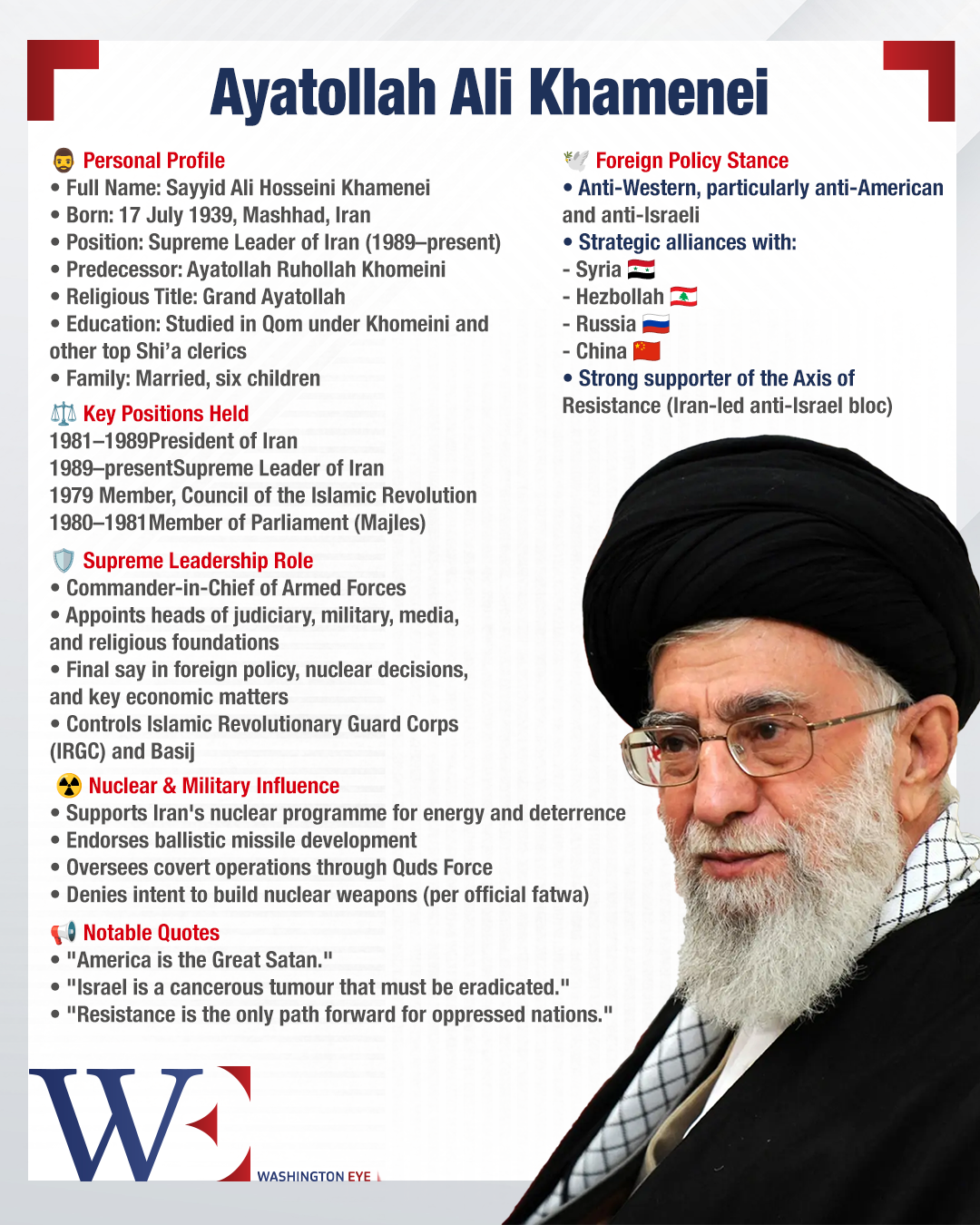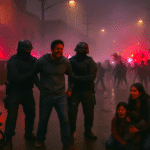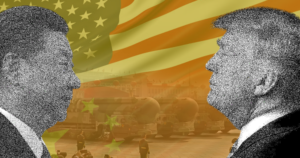by: The Washington Eye
Former U.S. President Donald Trump recently blocked – or “vetoed” – an Israeli proposal to assassinate Iran’s Supreme Leader, Ayatollah Ali Khamenei. According to two anonymous U.S. officials speaking to Reuters, Israel had alerted the U.S. to an operational opportunity during its recent offensive against Iran’s nuclear infrastructure. Trump, they said, intervened, asking rhetorically, “Have the Iranians killed an American yet? No. Until they do, we’re not even talking about going after the political leadership”. By framing the decision around direct American casualties, Trump signaled his intent to avoid widening the conflict.
Complicity and Constraints: Rethinking U.S. Strategy
The narrative of Trump as a restrained strategist falters under closer scrutiny. Prior to Israel’s offensive against Iran in April 2025, U.S. officials not only greenlit but were reportedly briefed in detail about Israeli plans, including airspace coordination and intelligence sharing. This pre-approval underscores a more active American role in escalating tensions—not merely reacting defensively or moderating extremes.
This complicity blurs the distinction between deterrence and provocation. While Trump did block the specific targeting of Ayatollah Khamenei, this restraint came after enabling a broad strike campaign that devastated Iranian infrastructure and reportedly led to mass civilian casualties. U.S. military logistics and diplomatic cover were indispensable to Israel’s military operation. By stopping short of the most incendiary act—the assassination of Iran’s Supreme Leader—Trump preserved plausible deniability without fundamentally de-escalating the conflict.
Thus, the veto does not represent a paradigm of cautious statecraft but rather a boundary-setting maneuver within a shared escalation framework. The U.S. role was less about opposing aggression and more about shaping its contours to avoid immediate retaliation while maximizing pressure on Tehran.
Implications for Middle Eastern Geopolitics
Trump’s refusal to green-light the assassination carries immediate regional consequences. A decapitation strike on Iran’s leadership could have triggered swift and sweeping retaliation, putting U.S. forces and allies across the region at risk. By preventing that escalation, Trump effectively restrained a potentially transformative action that might have forced regional powers to choose sides under acute pressure.
This restraint may also echo in global diplomatic circles. Europe and other U.S. partners—already calling for calm following Israeli strikes that reportedly killed hundreds, including civilians—will view Washington’s veto as a move toward stabilizing future crisis management and preserving strategic leverage for diplomacy.
The Precedent of Targeted Leadership Strikes
This episode recalls past high-stakes interventions, notably the 2020 U.S. drone strike that killed IRGC commander Qasem Soleimani. That attack, justified by claims of imminent threat, triggered swift Iranian missile retaliation and drew scrutiny over its legality and strategic wisdom. Unlike that case, the proposed assassination of Khamenei lacked a similar domestic or international legal mandate, nor had Iran attacked American personnel. Trump’s veto thus reasserts a deliberate threshold: neutralizing foreign leaders demands a different calculus than eliminating military commanders.
Impact on U.S.–Israel Relations and Future Diplomacy
Netanyahu reacted to the reports by describing them as “false” and declining to confirm their accuracy on Fox News. That measured response suggests careful diplomatic signaling—neither challenging U.S. authority nor undermining Israeli autonomy. Moving forward, this could encourage Israel to further coordinate covert operations with Washington, recognizing the constraints of U.S. red lines.
In parallel, Trump has expressed public optimism about reviving nuclear negotiations with Iran. Talks scheduled in Oman were scrapped amid the military flare-up. While competing pressures advocate for hardline tactics, Trump’s veto leaves open a path to diplomacy, reinforcing an oscillation between deterrence and negotiation in U.S. policy.














